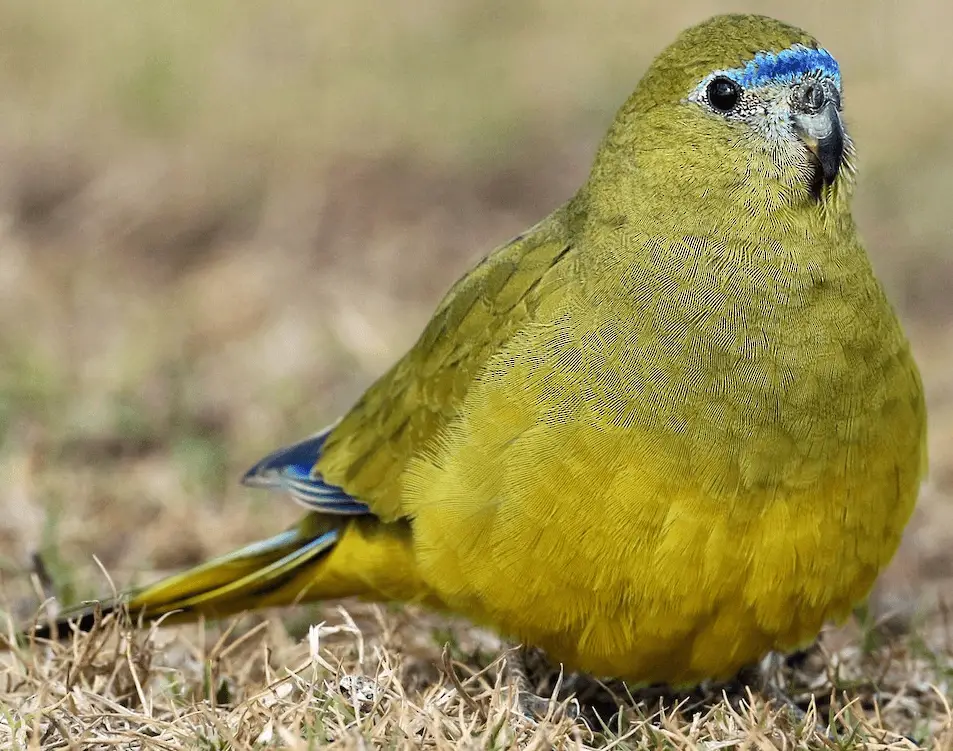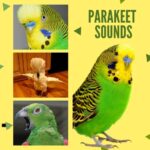
Rock Parrot 22 cm; 47–54 g. Frontal band to eye dark blue vaguely edged pale blue including around eye and on lores; rest of head and upperparts brownish olive, washed greyer on breast and shading to yellow on rest of underparts;
outermost median and secondary wing-coverts fringed pale blue; primary coverts and outer webs of flight-feathers dark blue; tail dark bluish olive, laterally edged yellow. Rock Parrot Female duller. Immature lacks a frontal band, whitish around the eye.
Systematics History
Supposedly darker E population described as race zietzi, but barely distinguishable from W birds. Treated as monotypic.
Subspecies
Monotypic.
SOURCE: blast4music
Distribution
Coasts and islands of W & SW Western Australia and C & EC South Australia.
Habitat
Coastal dunes, mangroves, saltflats, Atriplex shrublands, Casuarina woodland, brackish margins, and rocky shorelines and islets.
Movement
Resident, but with local post-breeding dispersal to other islands and coastal areas; on Kangaroo I birds are only present Jan–May.
Diet and Foraging
Rock Parrot Seeds and fruits of grasses, shrubs, and halophytic plants, notably Carpobrotus aequilaterus and C. crystallinum, also Lepidium foliosum, Correa reflexa, Atriplex, Rhagodia, Arthrocnemum arbuscula and the introduced Arctotheca Nivea; have been known to enter yards to take spilt wheat.
Sounds and Vocal Behavior
Not very vocal. When flushed a repeated high-pitched “tsit”. In-flight a repeated thin high-pitched “tsleet”. When feeding a soft twittering.
Breeding
Aug–Dec, rarely Feb; sometimes double-brooded. Nest in a crevice in a low cliff, rockface or overhang, recently all from islets, mostly limestone, where entrances are often hidden behind a curtain of vegetation;
at one site the entrances of disused burrows of Wedge-tailed Shearwaters (Ardenna Pacifica) were used, and once the occupied nest of a White-faced Storm-petrel (Pelagodroma marina). Rock Parrot Eggs 4–5; incubation lasts c. 18 days; nestling period c. 30 days.
Conservation Status
Not globally threatened. CITES II. Generally common. An apparent gap in range at the Great Australian Bight is attributed to the absence of suitable nesting sites.
Moreover, mainland nesting areas are vulnerable to predation by rats, foxes, goannas, and cats, so all recent breeding records have been from offshore islets.




















